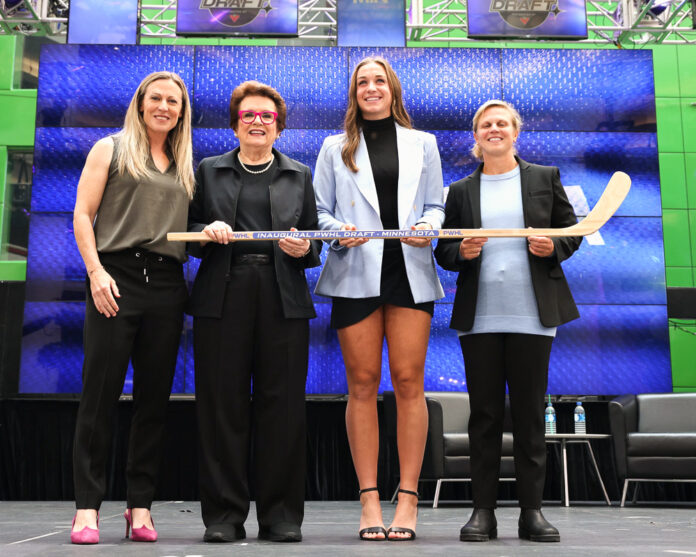
Marie-Philip Poulin. Hayley Wickenheiser. Jayna Hefford. Angela James. Cassie Campbell- Pascal. Hilary Knight.
To women’s hockey fans, these names are legendary. They carry legacies of greatness that have lived in the shadows of male hockey players like Wayne Gretzky, Gordie Howe, Mario Lemieux and Sidney Crosby.
They’ve amassed Olympic medals, world championships, thousands of points and countless unforgettable moments. These women are among the greatest hockey players in history.
Yet most hockey fans, and more importantly, sponsors, tend to only pay attention to women’s hockey when the Olympics roll around every four years. There has yet to be a successful professional women’s hockey league in North America. The world’s top players have never had a real home.
This summer’s announcement of the Professional Women’s Hockey League (PWHL) seeks to change that narrative.
The Canadian Women’s Hockey League (CWHL) and the Pro Hockey Federation (PHF) were the preeminent women’s leagues in North America for the past decade. However these leagues provided salaries lacking in comparison to male professional salaries, didn’t provide health insurance and never gained traction in mainstream hockey fandom. Working full-time jobs in addition to playing pro hockey has been the standard for women’s players.
After a 2019 player boycott over working conditions, the CWHL folded, leaving the PHF as the sole North American pro women’s hockey league. The boycott also led to the formation of the Professional Women’s Hockey Players Association (PWHPA), a non-profit organization dedicated to promoting professional women’s hockey.
Despite sharing a common goal of forming a unified women’s league, the PHF and the PWHPA never found success. Arguments between the two organizations meant that major backers like the NHL weren’t inclined to sponsor a new, unified league.
This summer, Mark Walter’s acquisition and merger of the PHF and the PWHPA brought hope for a unified future in women’s hockey. The PWHL was formed in late August, signifying a massive step forward in the unity of women’s hockey.
The PWHL’s ‘original six’ markets will be Toronto, Montreal, Ottawa, New York, Boston and Minneapolis. Its inaugural season will feature a 24-game regular season schedule set to begin in January. Broadcast rights have yet to be settled, but every game is expected to be televised.
A draft was held Sept. 18 to disperse the former PHF players and integrate players from women’s leagues around the world.
Professional women’s hockey is finally a unified front, with all the best players finally competing in the same league, rather than being divided amongst multiple leagues fighting for sponsors, network deals and players.
While the NHL is not giving the league any financial backing, it is seemingly committed to providing consulting and logistical support as the PWHL gets closer to its first puck drop.
Funding from the Mark Walter Group and Billie Jean King Enterprises will go a long way in ensuring the league’s success. For this reason, hockey fans and experts consider the PWHL to have more promise than its predecessors.
Still, the highest player salary figure for the PWHL’s inaugural season will be a mere $80,000 USD. Players in the PHF were signing for as much as $150,000 in its final season. Top salaries in the WNBA, albeit financially supported by the NBA, are north of $200,000.
While it might appear the sport has taken a step backward, the significance of a truly unified league with legitimate financial backing cannot be overstated. Player salaries are expected to rise in short order once the league begins operations and generates revenue.
There is serious excitement brimming in hockey circles. Fans finally have reason to be hopeful about pro women’s hockey. More than that, the success of this league will show many young girls that pursuing hockey professionally is viable. They’ll have more role models to look up to, and not just at the Olympics every four years.
Feature image provided by PWHL.





